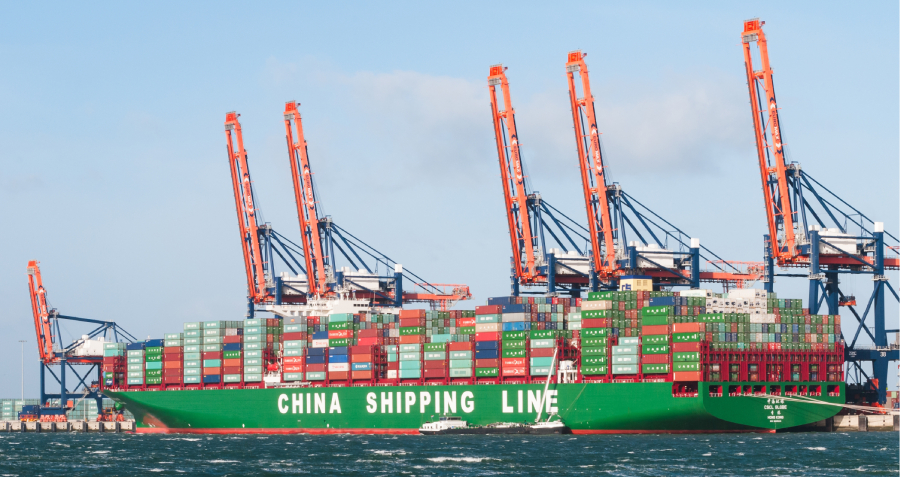
Over the past decade, publishing has undergone a revolution, perhaps the most profound since Gutenberg. In this series, we’ll look at how digitalization has changed book consumption, book production, book marketing—and how it may ultimately even change the nature of books. In Part 1 and Part 2 we talked about the Rise of E-books and Writers and Self-Publishing. The third Part is E-Book Production, Marketing and Sales, in which we take a closer look at how digitalization has changed the way books are edited, designed, and marketed. This is the last part in this series, E-Book publishing in China.
Part 4: E-publishing With Chinese Characteristics
On the surface, digital publishing would seem to be at an early stage in China. Observers say that traditional publishers are not pushing e-editions of their books very hard, and until recently, the government, which is still the industry’s dominant shareholder, has not put its weight behind the format.
Look more closely, however, it’s clear that a new publishing ecosystem is already taking shape in China, but it’s not the Amazon co-prosperity sphere model. Instead, digital publishing platforms are becoming the dominant channel for young writers.
Twenty-four-year-old Wong Daikon is part of this new generation. The process is quite straightforward, as she explains it: “We write on the internet and wait to be seen.”
In her case, it didn’t take long to be discovered on a literary site called Douban. “I wrote some short stories in Douban and many people liked them so the editors found me and published them.” Last year, those stories about a group of college students were published as a novel, The Reason I Must Be in Love, and soon the book will be made into a movie as well.
But Daikon, a Beijing resident who works in the film industry, is modest about her accomplishment. It’s easy to publish a book in China because there are so many readers, she insists.
“In China, publishing a book is not something special,” says Daikon. “Everyone is writing!”
There’s some hyperbole in that, but it may not be strictly true that everyone in China is writing for Douban and other literary platforms. It is true that Chinese writers are writing everything: stories, articles, books, movie reviews, and more. Screenplay writers even post scripts online as a way to attract producers’ attention.
On Douban, besides registering page views, readers can express their appreciation more directly too: one distinctive feature of the site is a kind of literary busking. If readers like a story, they can reward the writer with an electronic flower or even better, send the writer a few yuan, as if he or she were a virtual street performer.
Douban was founded by Yang Bo, a young Chinese entrepreneur who holds a PhD in computational physics from the University of California at San Diego. Yang launched Douban at a Beijing Starbucks in 2005 and since then has grown it into one of China’s larger media and social network brands.
Douban may be the most influential social network for good writing, but it’s a relatively small platform by China standards—it has only 200 million registered users. More popular are the public pages of WeChat, China’s 700+ million strong messaging app, where writers publish articles, short books, blogs, and even serials, and China Reading, another platform from Tencent, the owner of WeChat, which has about 600 million registered readers, and reportedly carries 10 million e-book titles.
Reading online is an extremely popular activity. A July 2016 report from the China Internet Network Information Center (CNNIC) estimated that 308 million people, or 43.1% of China’s 710 million internet users, read literature online. By comparison, 54.7% of internet users play games online, according to CNNIC.
Mobile internet reading was almost as high, 42.8%, a testament to the popularity of smart phones and the prevalence of high-speed 3G and 4G networks, which have made it possible for 656 million people—92.5% of the total number of internet users—to read at any time and in any place, according to CNNIC. And many take advantage of the opportunity: one 2013 survey quoted in according to a 2015 report sponsored by Nesta, a British innovation foundation, on opportunities in China for British writers, found that 42.1% of online Chinese readers read online more than three times a day, and roughly 50% read 30 minutes or more.
Chen Peng, an executive for a Chengdu publishing house, says that although paper books remain popular with urban people like himself, the platforms are popular with young people and less educated people who were previously overlooked by traditional publishers.
On these and other platforms, writers earn money through advertising, payments from the platforms, or subscriptions. Sometimes serials will start free but if they catch on, readers may find they need to pay up, according to the Nesta study.
The platform owners may not make much directly on that content, but that doesn’t mean money isn’t being made. Instead of relying solely on user payment as they once did, they now also generate income through content production. More significant, however, is the value of the audience that content draws: CNNIC analysts see low-cost internet literature as being “[a]t the forefront of the pan-entertainment IP industrial chain”. They argue that the loyal readers of that content represent tremendous economic value that will be captured later on when those works are adapted into films, TV dramas, or games.
Chinese netizens are also long on potential. Nearly 75% are between the ages of 10 and 39. The three largest employment demographics are students (25%) and the self-employed (21%), with company’s general staff a distant third (10.1%). Roughly half have either a high school or higher-education degree. Nearly 60% earn more than RMB 2001 per month ($289), and 20% of those take home more than RMB 5000 ($723) monthly, according to CNNIC. Moreover, it’s worth keeping in mind that’s more than it sounds: in terms of purchasing power parity, all of those figures should be multiplied by 3.5, according to the calculations of the Organisation for Economic Co-operation and Development.
At the same time, CNNIC analysts believe that the growth of the content platforms is making it easier to preserve the value of this burgeoning intellectual property, as these massive content platforms have the resources to take action against pirate websites for copyright violations.
Social network owners also see readers as a prime investment opportunity. For instance, the owner of China Reading, Tencent media group, recently announced plans to launch a $600-800 million IPO for China Reading in Hong Kong later this year, according to media reports. Shaun Rein, managing director of the China Market Research Group in Shanghai, is bullish on the prospects of that platform largely because of the advantages that online publication gives writers.
“There are fewer restrictions for online authors than in the print world,” Rein explains. “It’s also more difficult and slower to publish in a physical format because you have to work with publishers…They’re often state-owned, not market-oriented, and slow and lumbering. It can also get very costly to work with a publisher, so many authors prefer to publish their work quickly online where there’s fewer restrictions so they can get their content to their loyal readers faster.”
Others also see state ownership as a key reason that traditional publishers have not experimented more with e-books. “They’re not very market-oriented,” says Ma Lin, a Chinese editor based in Paderborn, Germany. “They don’t have the incentive to try new things.” Even digital-powered innovations such as print-on-demand technology have not made it to the publishing industry yet, by and large, according to Ma.
Most traditional publishers have not seen much business potential in the new format so far. “When the market is not growing and the publishing houses don’t see the profits, they hesitate to push this electronic reading thing,” Ma explains.
“Paper books are still the main revenues for my publishing house and for all the other publishing houses, as far as I know,” Chen confirms.
A few years ago, e-books might have presented a substantial logistic advantage over physical delivery, but delivery services are now quite efficient all over China. These days, books can be sent virtually anywhere in the country very quickly, even to rural areas, according to Chen.
At the moment, however, the online platforms may still have some advantages over traditional publishers when it comes to subject matter. Some academics have theorized that the traditional publisher’s earlier stodginess not just in format but in content helped fuel a “fiction vacuum” that the online platforms have now filled.
But the attitude of traditional publishers may be beginning to shift. The government began backing e-books in 2015, and an official government conference on e-publishing is being held this spring—but at the moment, most traditional booksellers still sell print editions either through brick-and-mortar or online bookstores.
For foreign publishers, China’s digital transformation offers some interesting new opportunities. For instance, Yeeyan, an online crowdsourced translation community, has made it possible to translate English books into Chinese at high speed, by putting several translators on the job at once. Walter Isaacson’s biography of Steve Jobs, for instance, was translated into Chinese in only one month, which meant that it could be released at the same time as the English edition, according to the Nesta report.
In the long run, however, perhaps the biggest Western opportunity, as e-publishing scholar Octavio Kulesz has suggested, will be in adapting some of the dynamic entertainment platforms in China and other parts of the developing world to the West. “[I]nstead of debating who will be the future Apple of China or the Amazon of South Africa, perhaps we will soon be asking ourselves who will be the Shanda of the US or the m4Lit of the UK.”



















